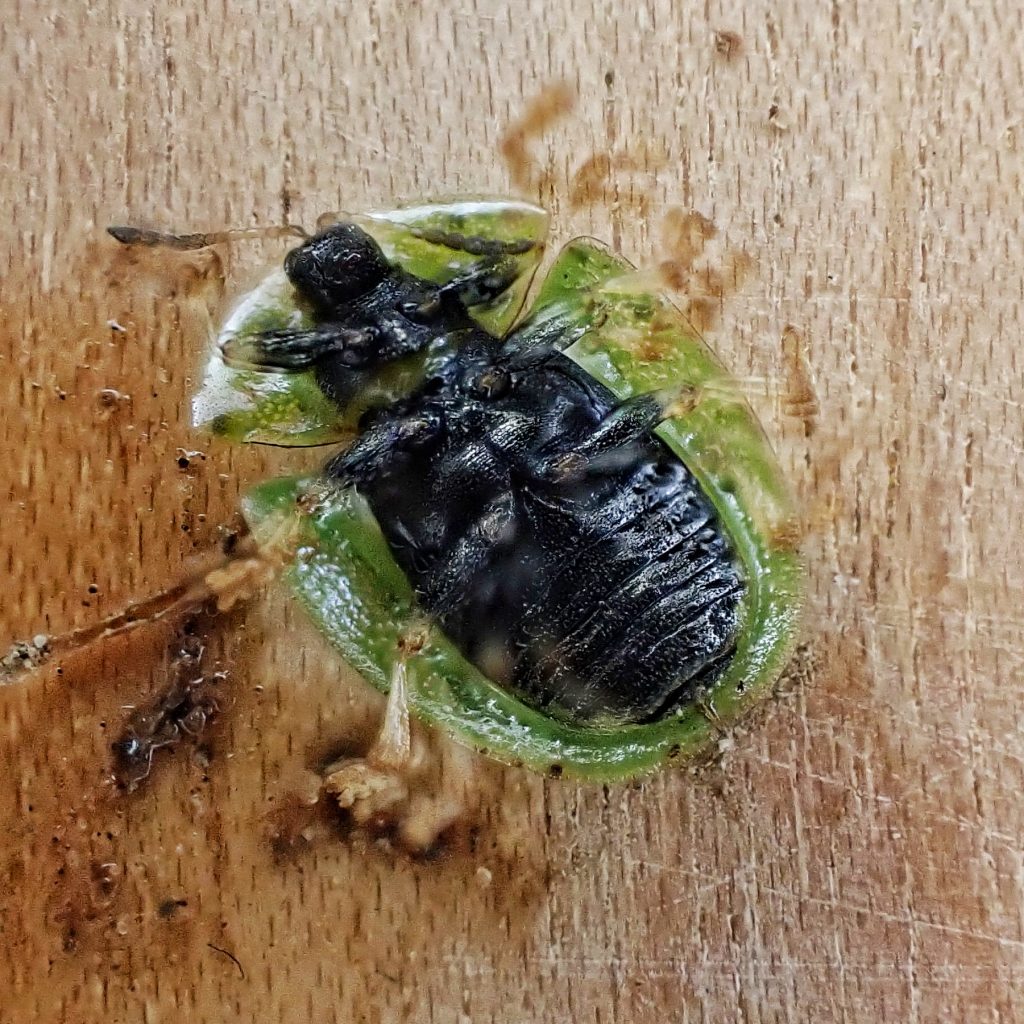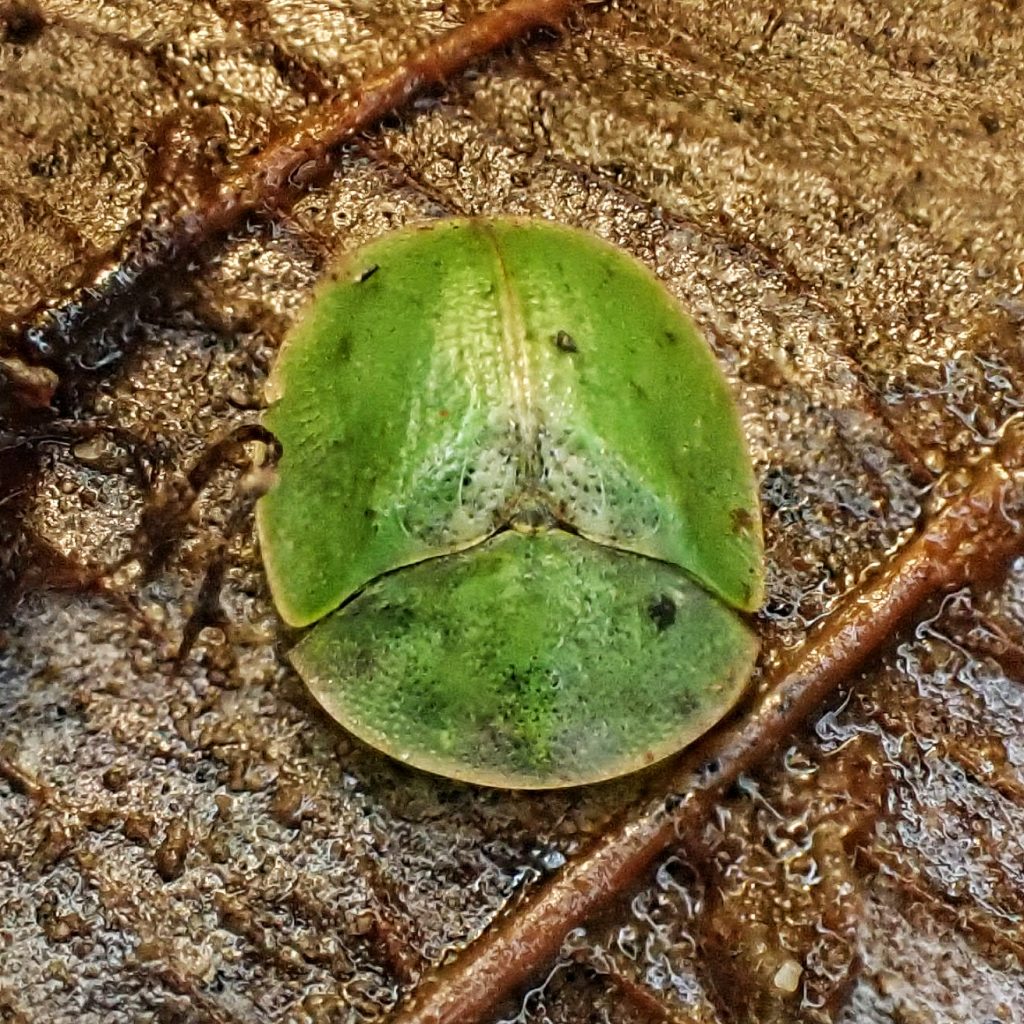
This very interesting member of the family Chrysomelidae, which, in Europe, also goes by the common names bloody-nosed beetle (because of red secretions on the head, which are also the basis for rubiginosa) and thistle defoliating beetle, very nearly escaped my attention as I was combing through the leaf litter. But something about the symmetry of this small, light green rounded oval on a decaying alder leaf caused me to lean in and peer closely at it, and then I saw the line dividing the elytra, and the one separating the pronotum and elytra. When I saw some legs poke out I quickly folded over the leaf before it could escape and hustled over to where Craig Sondergaard was sifting his own leaves. And he informed me it was a tortoise beetle, ‘something in Cassida, probably rubignosa’, which turned out to be spot on. I have since learned that the adults hibernate in leaf litter, and small migrations have even been observed in the fall of these bugs moving from fields of thistles to the forest for a long winter’s nap.
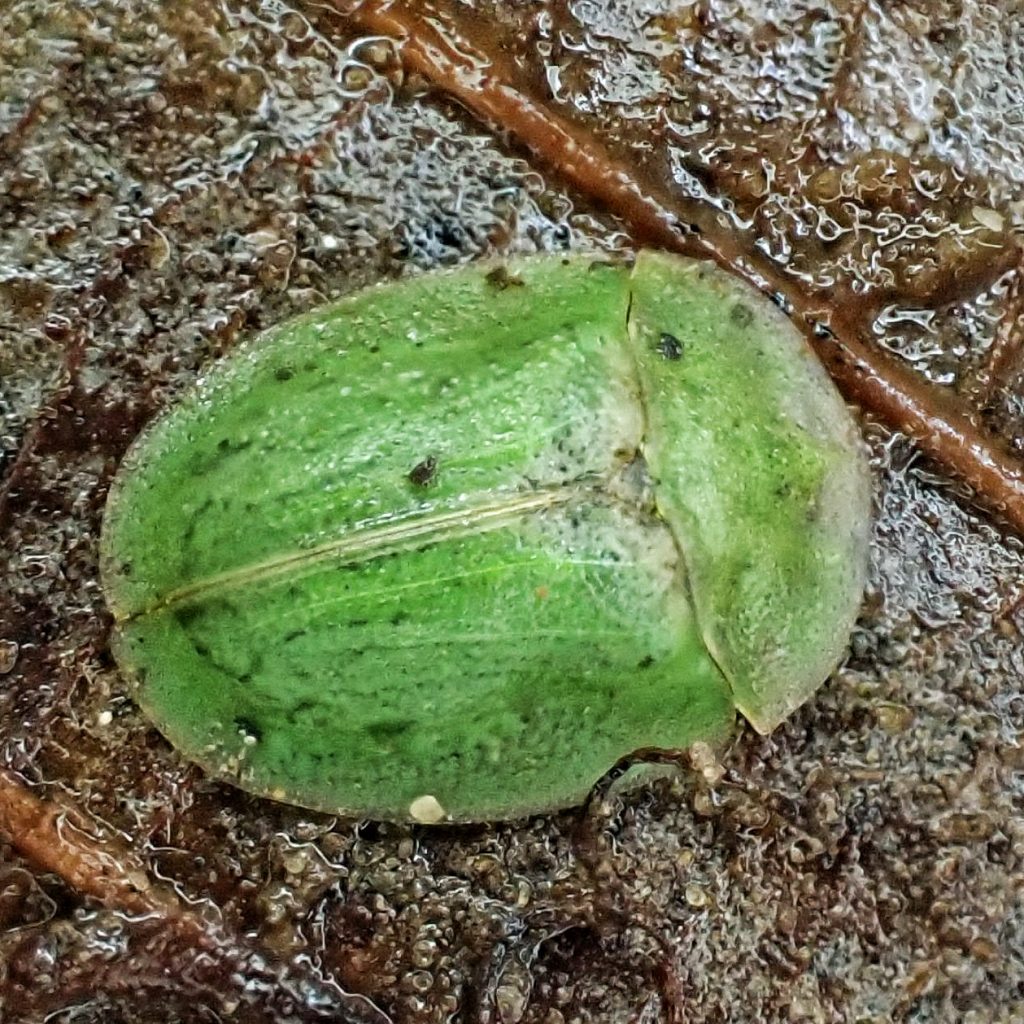
Cassida rubignosa is native to Europe, but was accidentally introduced to North America, and was first found in Quebec in 1902. It has since spread across the northern tier of the continent. It has also been introduced on the East Coast as a biocontrol for non-native and invasive thistles and burdock. However that practice has been discouraged because Thistle Tortoise Beetles do not confine their feeding to only non-native species of thistle (although they do show a decided preference for them), and many of the native thistles are valuable plants in their ecosystems. There is also the fact that they weren’t a particularly effective biocontrol, because they only manage to kill the thistles when there is a large population of beetles, and introduction of mass quantities of larva usually fail because of tremendous parasitism by wasps and tachinid flies, as well as predation by paper wasps and a wide variety of insectivores.
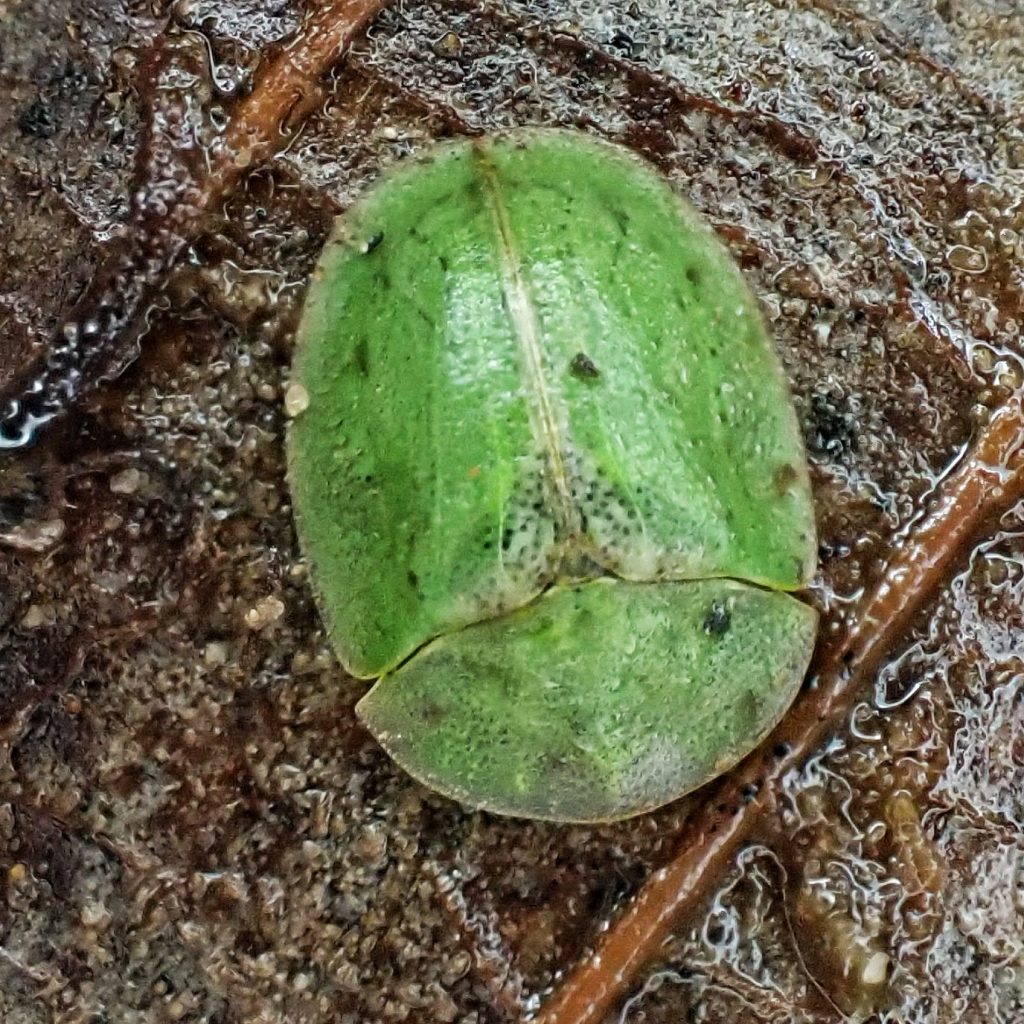
The safety of the early life of these tortoise beetles is intimately tied to excrement. The female deposits 1-5 eggs within an oötheca (which are made of a whitish secretion that turns brown and hard in about ten minutes), and seals it with her feces. This helps conceal the eggs and also functions as a barrier to encroachment. The hatched larvae are bizarre looking little creatures with a whole bunch of little pinnate spikes (called scoli, and they are sensory organs) encircling their body, and an elongated anus with a forked tip (the caudal fork). For protection the larvae take the exuviae from their first molt, fill it with their own feces (creating a fecal shield) and hook the whole thing on their caudal fork. And this is a manipulatable elongated anus, so when the scoli sense an intruder the larvae swings that fecal shield at the spot where danger lurks. Each time it molts it adds that feces filled exuviae to the shield so that as the larvae grows the shield grows. At rest they carry the fecal shield over their back. It has been shown to be an effective deterrent to predation by short mandibled creatures like ants and ladybeetles, but it doesn’t work nearly as well against assassin bugs with their long proboscis, and paper wasps with their long stinger.
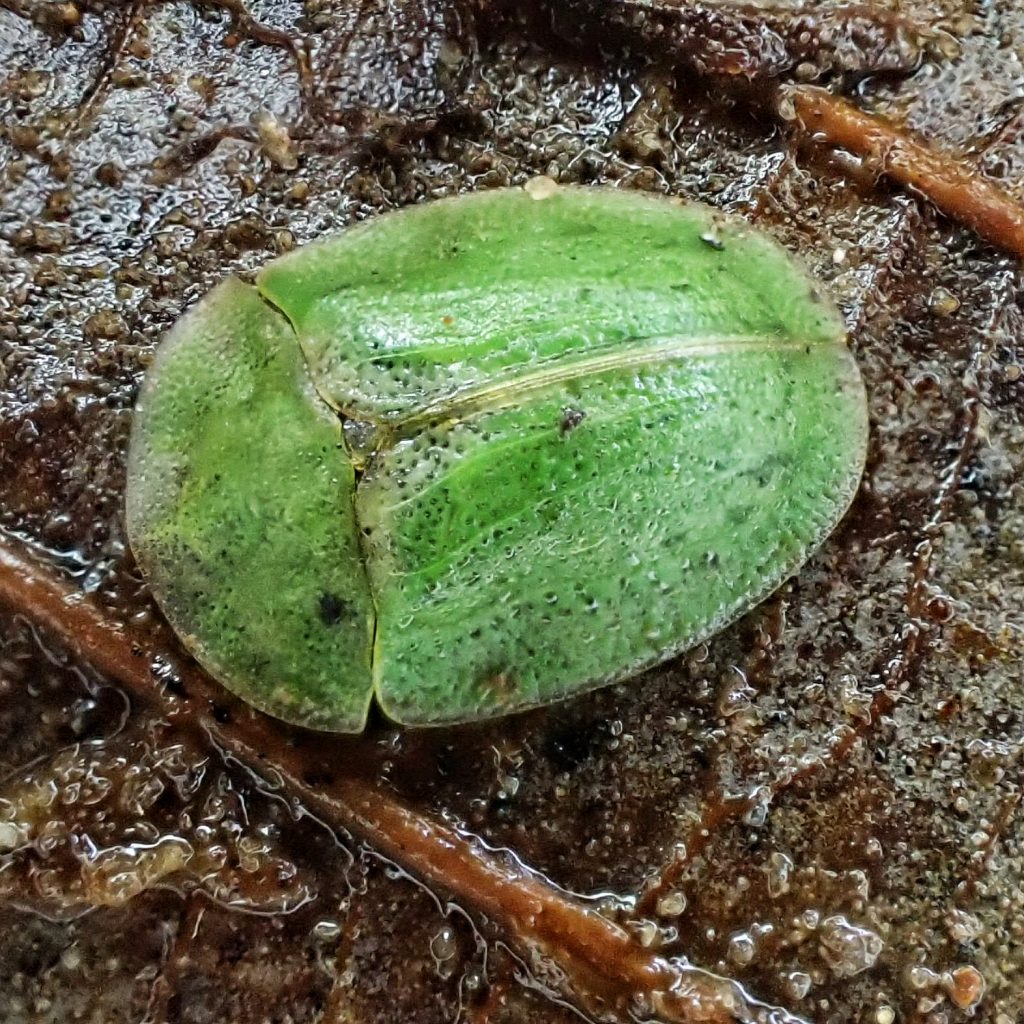
Description-Fairly small (6-7.5mm), green, flattened, rounded oval beetle, with the head covered completely by the pronotum; may have indistinct spots on the elytra and/or pronotum; pronotum and elytral margins usually opaque, but may be slightly translucent.
Similar species–Cassida flaveola is pale tan and the pronotum and elytra are more translucent; other beetles with pronotum covering the head are either distinctly spotted, or the pronotum is very translucent.
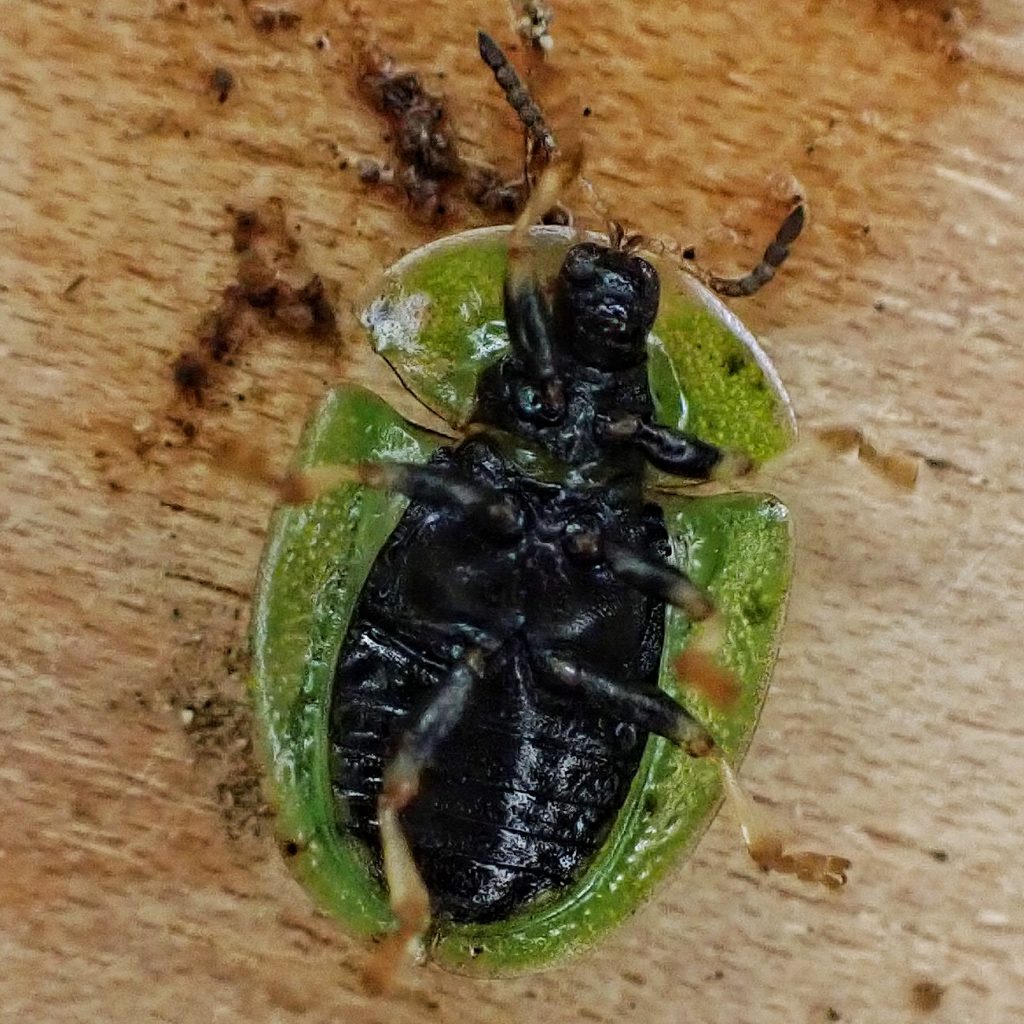
Habitat-Waste and disturbed ground, agricultural fields, open areas with thistles, burdock, and other weedy Asteraceae.
Range-European native, now holarctic; probably region wide.
Eats-Larval hosts include, amongst others, Cirsium spp. (Canadian and bull thistle) Centaurea spp. (knapweed, star thistle, bachelor’s buttons), Arctium spp. (burdock), and Carduus spp. (plumeless thistles), all of which are non-native; adults feed on the same species; adults and larvae skeletonize the leaves they feed upon.
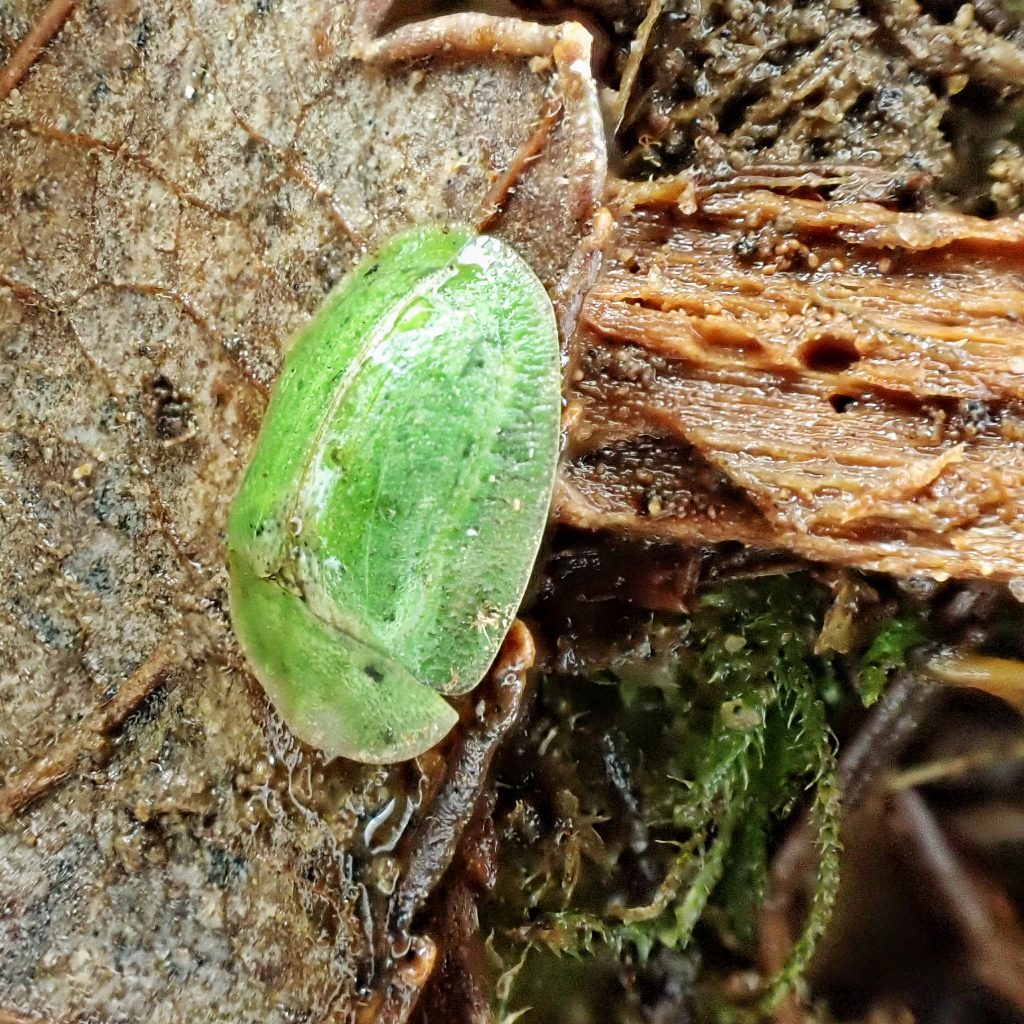
Eaten by– Larvae are parasitized by the eulopid wasp Tetrastichus rhosaces, and chalcid wasps in the genera Brachymeria, Conura, Foersterella, and Aprostocetus, as well as several others; also parasitized by Ichneumon and Eupelmidae wasps, and the tachinid fly Eucelatoria dimmocki; larva (and probably some adults) are preyed upon by ants, ladybeetles, spiders, harvestmen, assassin bugs, Podisus maculiventris (spined soldier bug), the lacebug Chrysoperla carnea, and damsel bugs in the genus Nabis; the paper wasp Polistes dominula is known to wreak havoc among exposed larvae; insectivorous birds and small mammals prey on adults.
Adults active-April through October in our region; adults overwinter in diapause, usually in forest floor litter.
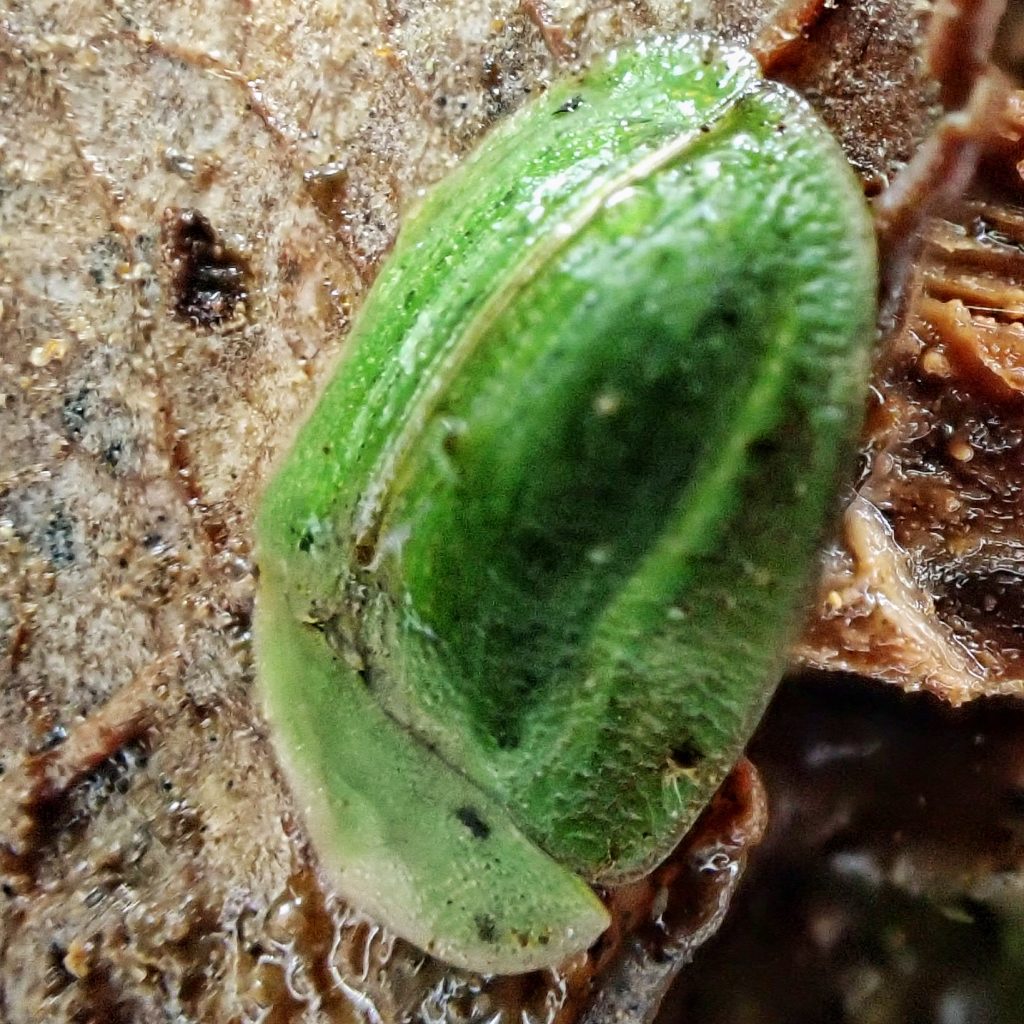
Life cycle-Univoltine; breeding begins in April, and ovipositing starts 3-7 days after mating; eggs are placed in oötheca, and is sealed with feces; there are 1-5 eggs per oötheca; usually laid on the underside of leaves, but sometimes on top, and occasionally on stems, and often they are the leaves nearest the ground; eggs hatch in 2-4 days; pupation happens after about 6 weeks, usually from early to late summer, and pupae usually attach to the midrib of the leaves or the main stem of the plant; females lay 200-800 eggs in a season, with alternating 6-7 week reproduction and rest cycles; may live up to 3 years.
Etymology of names–Cassida is from the Latin word for helmet, and refers to the pronotum covering the head. The specific epithet rubiginosa is from the Latin for’rust colored’, referring to the excretion of red fluid from its head.
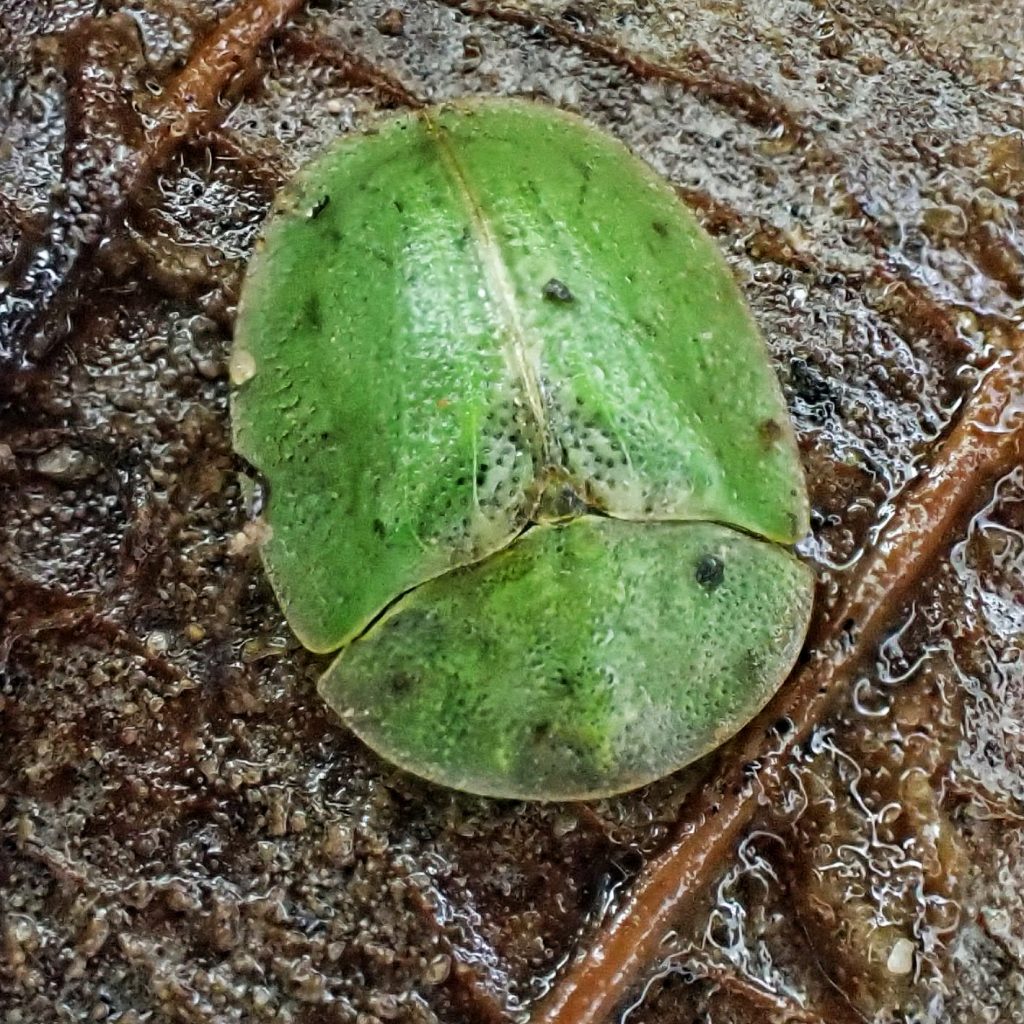
Species Cassida rubiginosa – Thistle Tortoise Beetle – BugGuide.Net
http://www.chebucto.ns.ca/environment/NHR/PDF/Maritime_Cassida.pdf
